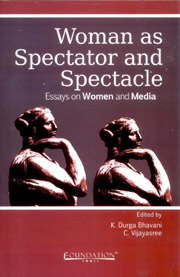Book contents
- Frontmatter
- Contents
- Notes on Contributors
- Preface
- Introduction
- Part I Media and Gender (In)Justice
- Part II Framing Women
- 7 Images of Women in Indian Soap Operas
- 8 “People Said I Created Pornography”: Sexuality, the Gaze and Rituparno Ghosh
- 9 Women's Issues in Telugu Films: Limits of Social Reform
- 10 A Case Study of the Reel-life ‘Wimin’ in Fire and Girlfriend: Fruition to Miso Phallicism from mere Feminism
- 11 Gender at Cyberspace: Who's Online?
9 - Women's Issues in Telugu Films: Limits of Social Reform
from Part II - Framing Women
Published online by Cambridge University Press: 05 November 2011
- Frontmatter
- Contents
- Notes on Contributors
- Preface
- Introduction
- Part I Media and Gender (In)Justice
- Part II Framing Women
- 7 Images of Women in Indian Soap Operas
- 8 “People Said I Created Pornography”: Sexuality, the Gaze and Rituparno Ghosh
- 9 Women's Issues in Telugu Films: Limits of Social Reform
- 10 A Case Study of the Reel-life ‘Wimin’ in Fire and Girlfriend: Fruition to Miso Phallicism from mere Feminism
- 11 Gender at Cyberspace: Who's Online?
Summary
Telugu Film industry, the second largest of its kind in India, celebrated its platinum jubilee recently. Conservative estimates indicate that the industry produces around 150 films a year. The corpus of Telugu films is therefore so large that it is hazardous to offer any generalizations about its trends and themes. The one aspect I wish to examine here is the forging of issues related to women in films, and the patterns that appear in the presentation/representation of these issues. I will quickly track here the trajectory of woman-centric films in Telugu and examine the ideological underpinnings of these film texts. This will enable us to determine the discursive shifts in the genre and note if these have made a qualitative difference to the perception and handling of women's issues. To plot this, I shall point to the dominant trends in each decade. Let me add that the analysis is by no means exhaustive; it only focuses on certain nodal issues at different points of time, in the evolution of women's film as a sub-genre in Telugu cinema.
Cinema has always been sensitive to the problems of women and given considerable space to women's issues. It is significant to note that the 30s witnessed the making of some reformist movies such as Mala Pilla (The Harijan Girl, 1938) and Malli Pelli (Remarriage,1939). Issues such as dowry, child marriage and widow marriage engaged the attention of the film makers through the 50s.
- Type
- Chapter
- Information
- Woman as Spectator and SpectacleEssays on Women and Media, pp. 77 - 84Publisher: Foundation BooksPrint publication year: 2010

